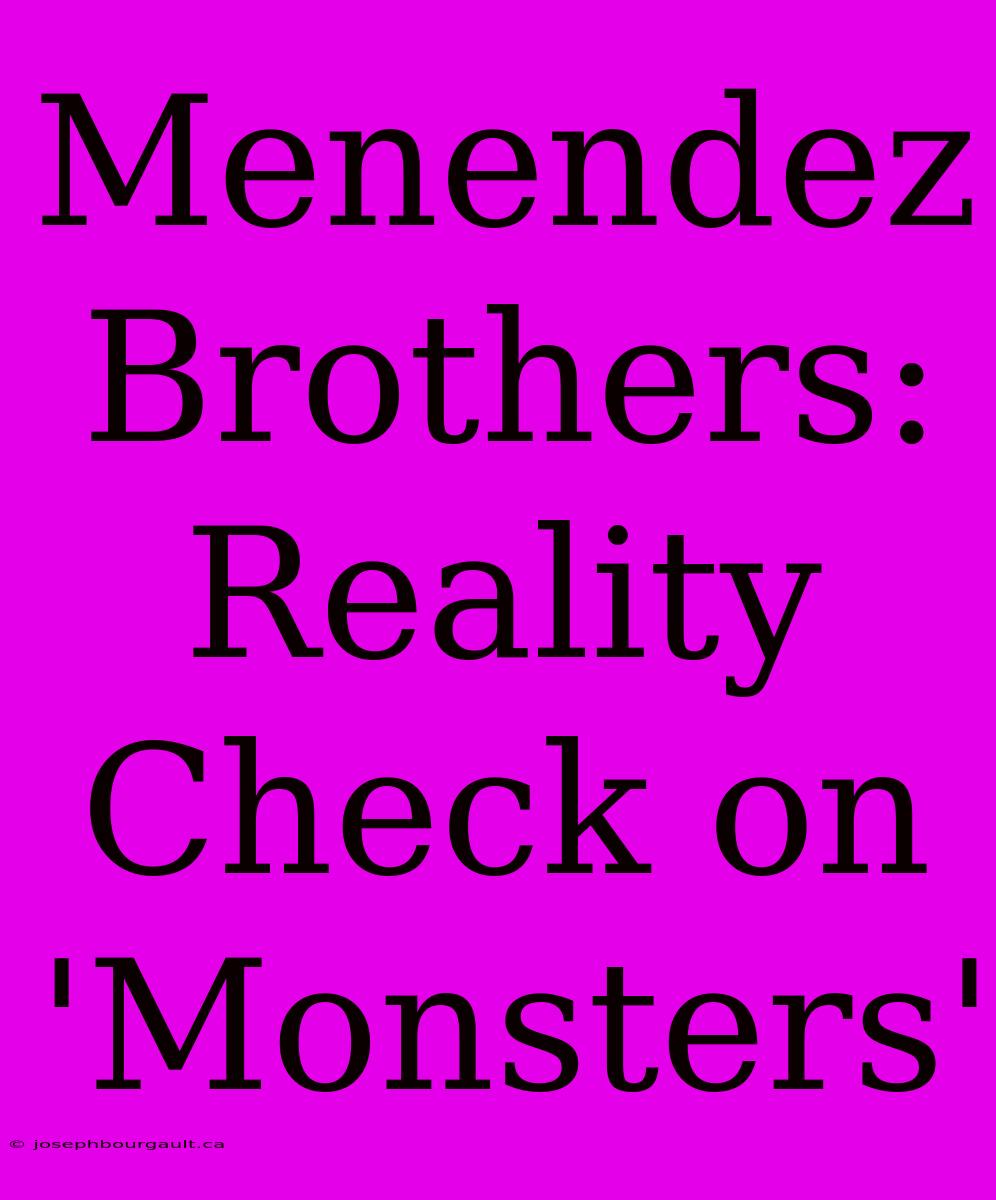Menendez Brothers: Reality Check on 'Monsters'
The Menendez brothers, Lyle and Erik, became household names in the 1990s after being convicted of murdering their parents, Jose and Kitty Menendez. The case captivated the nation, fueled by the shocking brutality of the crime, the brothers' privileged background, and the subsequent trial that revealed a complex web of abuse, dysfunction, and conflicting narratives. While labeled as "monsters" by many, a deeper look into the case reveals a nuanced reality that demands a more critical lens.
The Narrative of Abuse
The brothers' defense hinged on years of alleged physical and emotional abuse at the hands of their father, Jose. Testimony during the trial described a controlling and violent father, who subjected his sons to psychological torment, verbal abuse, and even physical harm. This narrative was further amplified by the discovery of a hidden stash of pornography, suggesting Jose's potential infidelity and the potential for sexual abuse within the family.
The Complex Dynamics of Family
While the abuse claims are undeniable, the extent of their impact on the brothers and the role of the family dynamic remain subject to debate. The mother, Kitty, presented as a passive figure, complicit in the abuse or, according to some accounts, actively enabling it. The family's internal struggles, the brothers' strained relationships, and their yearning for independence paint a picture of dysfunction that went beyond simple parental abuse.
A Question of Justice
The brothers' conviction and subsequent life sentences reflect a societal understanding of the crime as premeditated and cold-blooded. Yet, the jury's inability to reach a unanimous verdict on the first trial and the subsequent appeal highlight the complexity of the case and the difficulty in definitively proving premeditation.
The Case for a More Complex Understanding
The Menendez brothers case remains controversial, a tangled web of family dysfunction, abuse, and violence. While their actions were undeniably criminal, labeling them as "monsters" obscures the complex motivations, the family's troubled history, and the potential for mitigating factors that influenced their choices. It compels us to grapple with the complexities of human nature, the limitations of justice, and the enduring questions of how to understand and address familial abuse and its impact on individuals.
Conclusion:
The Menendez brothers case is a tragic reminder that complex, multifaceted issues often lie beneath the surface of seemingly straightforward narratives. By understanding the dynamics of the family, the brothers' history of abuse, and the nuanced legal arguments presented, we can move beyond simplistic labels and approach the case with a more nuanced and critical lens. This allows for a deeper understanding of the events, the individuals involved, and the complexities of justice in a case that continues to resonate decades later.

